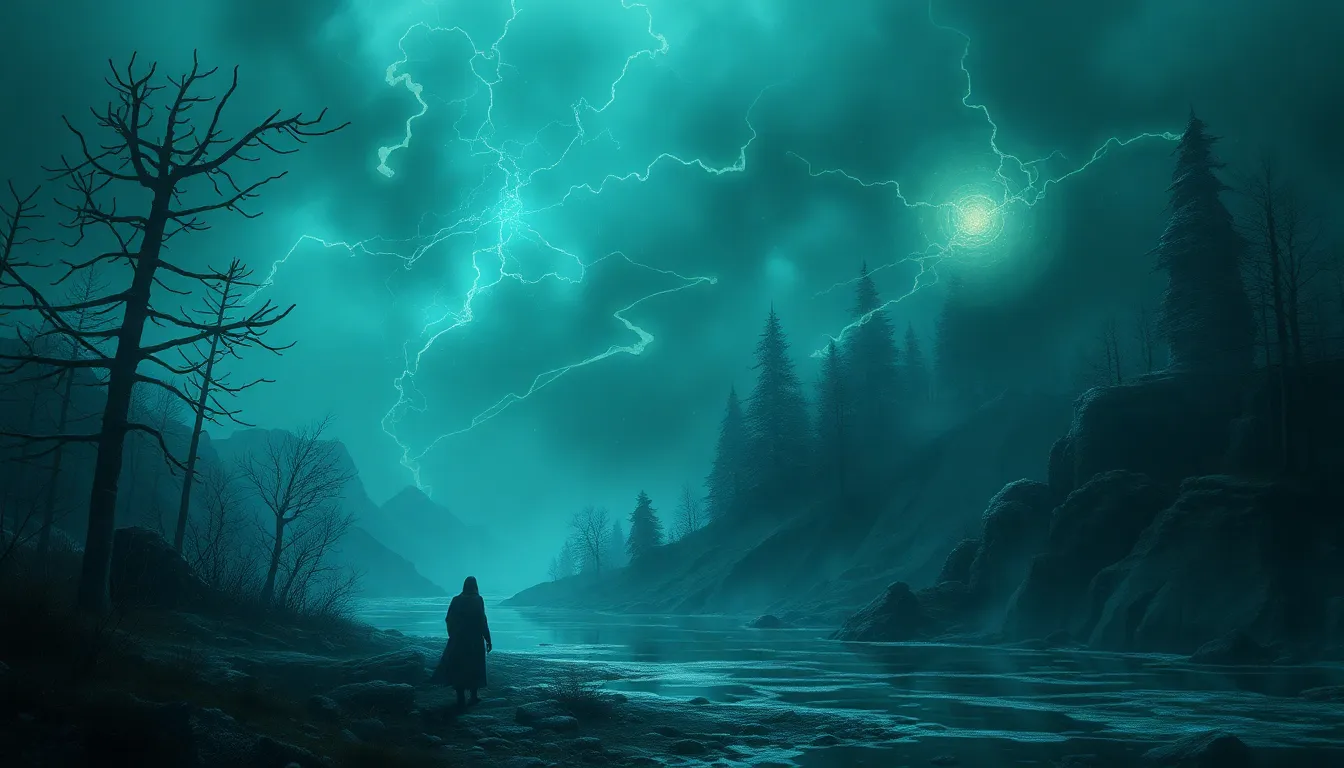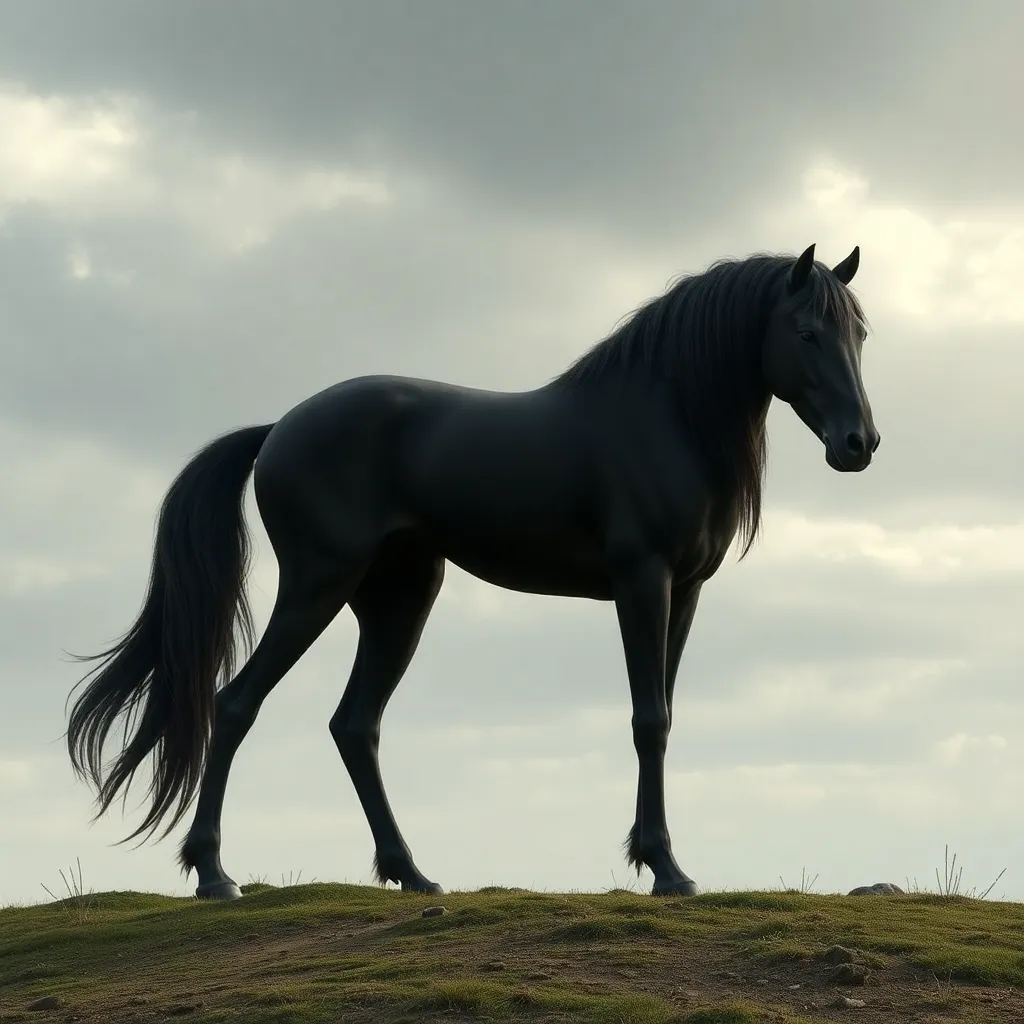The Lore of the Land: Exploring the Spirits of the Norse Jötnar
I. Introduction to the Jötnar
The Jötnar, often referred to as giants in Norse mythology, hold a significant place within the rich tapestry of Norse lore. They are not merely monstrous beings; they embody elemental forces and represent various aspects of nature and the cosmos. The purpose of exploring their lore is to understand their profound impact on the cultural and spiritual beliefs of the Norse people.
II. The Origins of the Jötnar in Norse Creation Myths
The story of the Jötnar begins in the primordial void known as Ginnungagap, a vast emptiness that existed before the world was formed. From this void emerged Ymir, the first Jötunn, whose body would eventually give rise to the world as we know it.
- Ginnungagap: The great void, a space of potentiality where creation begins.
- The Emergence of Ymir: Ymir is considered the progenitor of all Jötnar and represents the chaotic and untamed aspects of nature.
- The Role of the Jötnar: As the cosmos formed, the Jötnar played crucial roles in shaping the Earth, the seas, and even the heavens.
III. Characteristics and Attributes of the Jötnar
The Jötnar are characterized by their immense size and strength, but they also possess a variety of forms and characteristics that reflect their elemental nature.
- Physical Traits: Jötnar are often depicted as towering figures, with some having specific traits like horns, scales, or icy features.
- Elemental Associations: Different Jötnar are linked to various elements:
- Fire: Represented by beings like Surtr.
- Ice: Embodied by Jötnar such as Þjazi.
- Earth: Many Jötnar are associated with the foundational aspects of the land.
- Duality of Creation and Destruction: The Jötnar embody both the creative and destructive forces of nature, highlighting the balance necessary for life.
IV. The Jötnar and Their Relations with the Gods
The relationships between the Jötnar and the Aesir, the primary pantheon of Norse gods, are complex and multifaceted. These interactions range from fierce battles to unexpected alliances.
- Complex Relationships: The Jötnar are often seen as adversaries to the Aesir, yet they also have familial ties and agreements that blur the lines of enmity.
- Notable Alliances and Conflicts: Key stories illustrate these dynamics, such as the marriage of the goddess Freyja to the Jötunn Óðr, and the conflicts between Thor and various Jötnar.
- Examples of Dual Roles: Some Jötnar, like Loki, are both allies and adversaries, reflecting the nuanced nature of their relationships with the gods.
V. Key Jötnar Figures in Norse Mythology
Several Jötnar stand out in the myths, each contributing uniquely to the lore.
- Loki: As a trickster god, Loki’s Jötnar heritage plays a crucial role in his identity and actions within the myths.
- Skadi: The goddess of winter, Skadi is connected to the Jötnar through her father, the Jötunn Þjazi, and embodies the fierce beauty of winter landscapes.
- Thrym: The Jötunn of frost giants, Thrym is infamous for stealing Thor’s hammer, leading to one of the most famous tales of conflict between gods and giants.
VI. The Jötnar’s Influence on Norse Culture and Society
The Jötnar significantly influenced Viking beliefs, cultural practices, and artistic expressions.
- Role in Viking Beliefs: The Jötnar were integral to the Viking understanding of the world, symbolizing the raw power of nature and its unpredictability.
- In Art and Literature: Jötnar frequently appear in sagas, poems, and carvings, illustrating their importance in storytelling and cultural memory.
- Modern Interpretations: Contemporary adaptations in films, books, and games continue to draw on Jötnar lore, showcasing their enduring legacy in popular culture.
VII. The Enduring Legacy of the Jötnar in Contemporary Spirituality
Today, the Jötnar are experiencing a revival within modern spiritual movements, particularly among neopagan communities.
- Pagan Revival: Many modern practitioners explore the worship and reverence of Jötnar, integrating them into their spiritual practices.
- Neopagan Practices: Rituals and celebrations often include invocations of the Jötnar, reflecting their elemental associations and natural powers.
- Environmental Relevance: The Jötnar’s connection to the natural world resonates with contemporary movements focused on environmentalism and sustainability.
VIII. Conclusion: The Jötnar’s Place in the Tapestry of Norse Lore
In conclusion, the Jötnar play a crucial role in Norse mythology, embodying the duality of nature and the complexities of relationships between the divine and the chaotic. Their enduring fascination reflects the deep-seated human connection to the natural world and the elemental forces that shape our existence. As we continue to explore their lore, the Jötnar remind us of the intricate balance between creation and destruction, and the ever-present power of nature in our lives.



